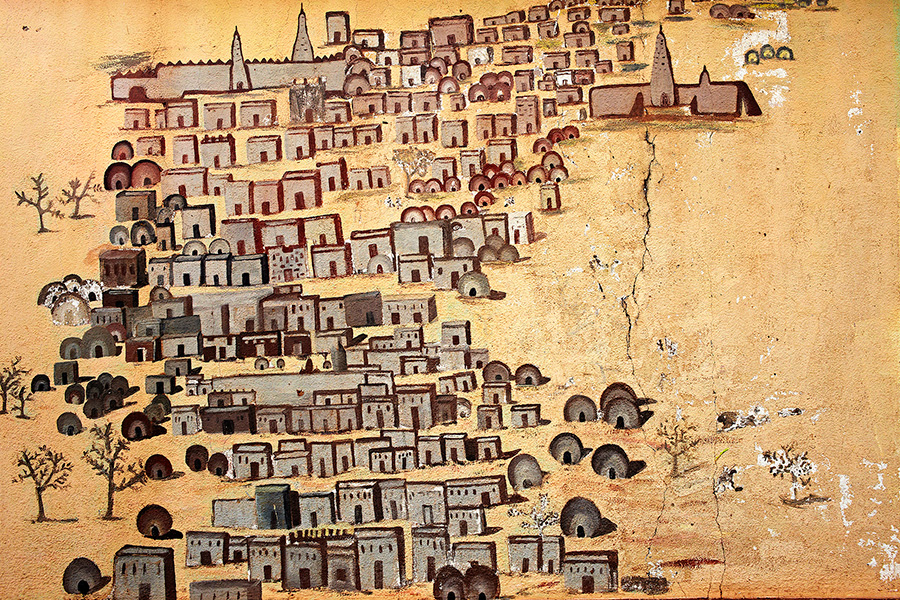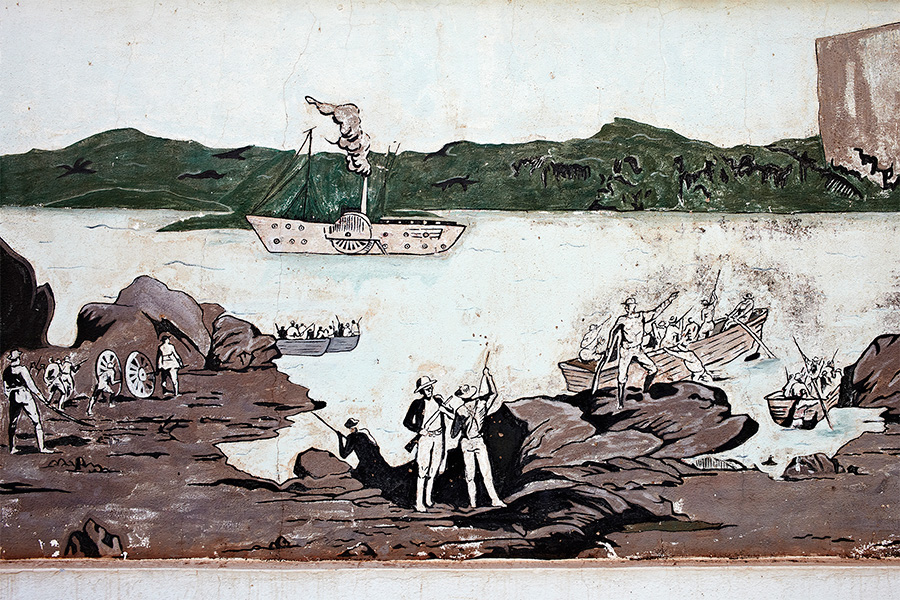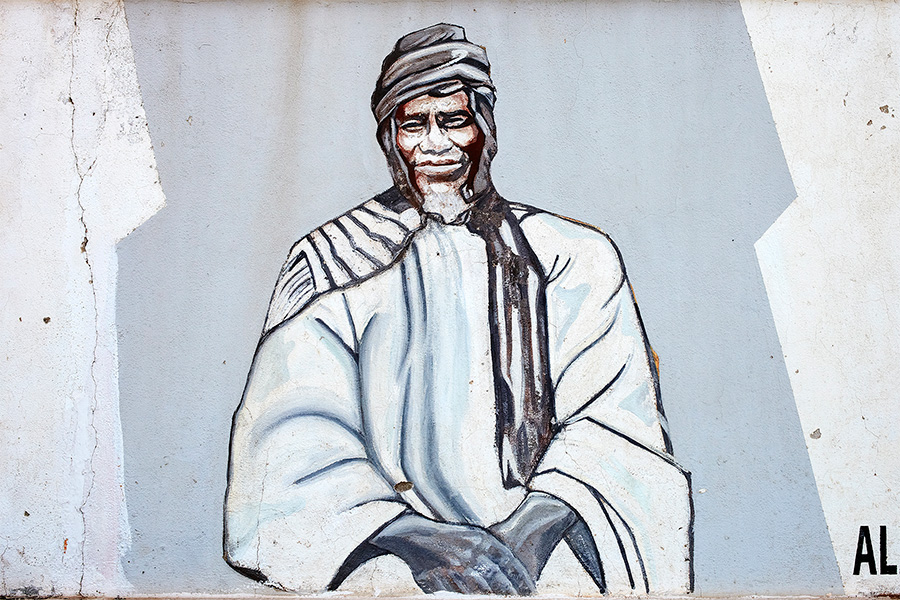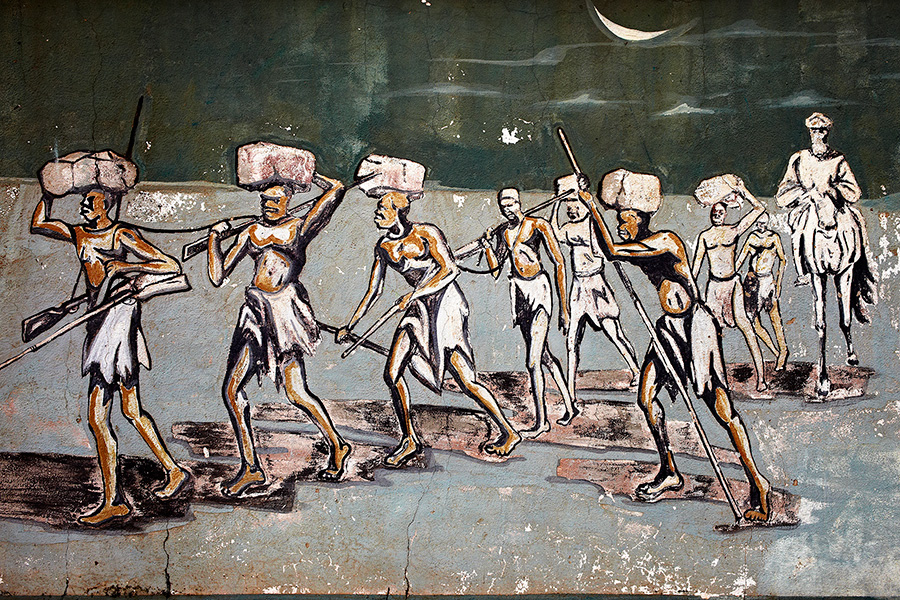Mali Militari #2
KOULOUBA, BAMAKO, 2013-2015
« Alpha Oumar Konaré, elected president in 1992, believed in the power of monuments to celebrate the country’s rich history and to unite Mali’s diverse peoples. For the ten years that Konaré was in power, memorials appeared across the capital and throughout the country’s regions.
(…)
The hilltop district of Koulouba (which means “mountain of power” in Bambara) overlooks the city of Bamako. The presidential residence is at its summit and can be seen from along the riverbanks and throughout the city. The murals found at Koulouba represent colonial administrators, African soldiers who fought for the French, and Samory Touré, the founder of the Wassoulou Empire. They evoke roughly 150 years, only a brief period in the deep history of the region, a period linked to the administration and defense of the modern state.
Gbré’s images capture the contradictions of Bamako and its memorials. Their stark, austere quality is vastly different from the vibrancy of the city’s popular neighborhoods. Depicting subjects from aging murals in Koulouba to new monu- ments in Sotuba, these photographs bring to mind the disparity between the state’s audacious celebration of itself and the daily lives of so many Malians. »*
* Susanna D. Wing, Monument City, The Past is a foreign country, p.71-75, 2015

Mali Militari, fresques murales, Koulouba, Bamako, 2016
Installation, 158 x 414 cm, 31 photographs, 20 x 30 cm each, 2013-2015
Installation view, Crisis of Presences, Pori Art Museum, Finland, 2016

Tombouctou vue par René Caillé (1799-1838)

Cour d’Ahmadou Sekou (1776-1844), fondateur de l’Empire peul du Macina

Général Louis Faidherbe (1818-1889)

Le combat de Médine, 18 juillet 1857

Almamy Samory Touré (1830-1900), fondateur de l’Empire Wassoulou

Un convoi de captifs aux environ de Kita, 1863-66

Bataille de Sansanding,1865



